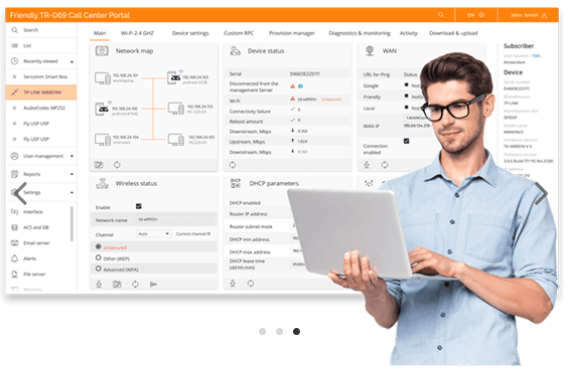The Internet of Things (IoT) has revolutionized the way we interact with technology, connecting countless devices to the internet for improved efficiency and convenience. However, managing these devices can be a daunting task, especially as the number of IoT devices continues to grow exponentially. In this guest post, we’ll delve into the world of IoT device management, exploring its significance, challenges, and effective strategies to simplify the process.
Understanding IoT Device Management
IoT device management refers to the process of provisioning, monitoring, updating, and troubleshooting IoT devices throughout their entire lifecycle. It plays a crucial role in ensuring the seamless operation and security of IoT ecosystems, which can range from smart homes and industrial automation to healthcare and agriculture.
Challenges in IoT Device Management
- Device Proliferation: As the number of IoT devices increases, managing them individually becomes impractical. Efficiently handling large-scale deployments is a significant challenge.
- Diverse Device Ecosystem: IoT encompasses a wide variety of devices with different hardware, operating systems, and communication protocols. Managing this diversity can be complex.
- Security Concerns: IoT devices are vulnerable to cyberattacks. Ensuring their security by regularly updating firmware and implementing robust authentication mechanisms is vital.
- Data Management: IoT devices generate vast amounts of data. Managing and analyzing this data efficiently is essential for deriving meaningful insights.
- Scalability: As IoT projects grow, the management solution needs to scale accordingly to accommodate more devices without compromising performance.
Effective Strategies for IoT Device Management
- Device Provisioning and Onboarding: Simplify the process of adding devices to the network. Automate provisioning and onboarding procedures to reduce manual effort.
- Remote Monitoring and Diagnostics: Implement real-time monitoring and diagnostics to identify and address device issues proactively. Utilize dashboards and alerts for quick response.
- Firmware Updates: Establish a system for remote firmware updates to ensure devices are running the latest, most secure software.
- Security Measures: Employ robust security practices, including device authentication, encryption, and access controls. Regularly assess and update security protocols.
- Data Management: Invest in data analytics tools to process and extract valuable insights from the data generated by IoT devices. Use this data to optimize operations and improve decision-making.
- Scalable Platforms: Choose an IoT device management platform that can scale with your project’s growth. Ensure it offers flexibility to adapt to evolving requirements.
- Compliance and Regulations: Stay informed about IoT-related regulations and compliance standards in your industry. Ensure your IoT management practices align with these requirements.
Conclusion
IoT device management is an essential component of successful IoT deployments. With the right strategies in place, organizations can simplify the management of their IoT ecosystems, reduce operational costs, enhance security, and harness the full potential of IoT technology. As the IoT landscape continues to evolve, staying up-to-date with best practices in device management is crucial for success in this dynamic field.
Friendly Technologies stands at the forefront as a prominent provider of carrier-grade platforms catering to IoT, Smart Home, and TR-069 device management. Our solutions empower seamless and consolidated administration of a diverse array of services, all under the umbrella of a single platform. With a commitment to excellence, we enable the efficient management of a wide spectrum of services, making innovation and connectivity accessible in a unified manner.








































